Ever wish you could flip a switch and silence your mind, just like you do with your phone? It’s easy to get caught up in the whirlwind of worries and stress. We’ve all been there—feeling overwhelmed by what we need to do next. But remember those times when you lost track of time, fully immersed in what you were doing? In those moments, you were truly present, enjoying the beauty of now. That’s the magic of mindfulness, and here’s the good news: you can train yourself to access that state more often.
 Mindfulness isn’t just a way to hit pause on a busy mind; it’s a tool that helps you get out of your head and into the present moment. Not only does it improve focus and creativity, but the more mindful we are, the better we handle life's challenges.
Mindfulness isn’t just a way to hit pause on a busy mind; it’s a tool that helps you get out of your head and into the present moment. Not only does it improve focus and creativity, but the more mindful we are, the better we handle life's challenges.
So, what exactly is mindfulness? Simply put, it’s the practice of being fully present in the moment and accepting your experiences without judgment.
Mindfulness is built on three key pillars: Intention, Attention, and Attitude. Think of these as your mindfulness foundations:
- Intention is setting a conscious goal to be aware of your inner and outer world. Each day, ask yourself, “How do I want to show up today?”
- Attention is about focusing on the present, without getting lost in the details or content of a situation. When your mind wanders, gently bring it back. A helpful trick? Focus on your breath while in conversation or during tasks.
- Attitude is about embracing experiences as they are, with neutrality and without judgment. Cultivating a compassionate, non-judgmental perspective helps us stay grounded and aware.
By paying attention to what’s happening right now, setting clear intentions, and approaching life with an open, non-judgmental attitude, we can foster a deeper sense of mindfulness in our everyday lives.
Techniques You Can Try: "Sit and Know You’re Sitting," Body Scan, and Grounding Meditation
Here are a few mindfulness techniques you might want to explore: Sit and Know You’re Sitting, Body Scan, and Grounding Meditation.
- Sit and Know You’re Sitting: This practice is about simply sitting with awareness. Find a comfortable seat, close your eyes, and take a few deep breaths to relax. As you breathe in, acknowledge that you’re breathing in. As you breathe out, know that you're breathing out. You can silently say “in” and “out” with each breath to steady your attention. And when your mind inevitably wanders (because it will), bring patience, curiosity, and forgiveness to the moment as you gently return your focus to your breath.
- Body Scan: This is a powerful way to become aware of the sensations in your body and release hidden stress or tension. You don’t need to “fix” anything during the scan—just notice what’s happening in your body. Here’s how: Close your eyes, take a few long, deep breaths, and let yourself arrive in the present. Relax both your body and your mind. Now, bring your awareness to the crown of your head, moving down to your forehead, eyes, cheeks, and neck. Continue down your shoulders, arms, and all the way to your fingertips. Then, shift awareness to your upper back, shoulder blades, and down your back. Notice the front of your torso, from your chest to your stomach, and move through your hips, legs, and feet. Let your whole body be at ease. Sit quietly with the experience of having a body, and when you’re ready, open your eyes and notice how relaxed you feel.
One of my favorite quotes is, “Be where your feet are.” To help you ground yourself in the present moment, I want to share a simple, yet effective meditation called the 5-4-3-2-1 technique. This practice is fantastic for bringing your awareness back to the here and now.
For this meditation, keep your eyes open and take a few deep breaths. As you settle into the present, become aware of your surroundings. With each step, take a moment to pause and fully absorb the experience:
- Notice five things you can see.
- Identify four things you can feel or touch.
- Listen for three things you can hear.
- Notice two things you can smell.
- Think of one thing you can taste (if you can’t connect with a taste right now, just note a flavor you enjoy).
This exercise is a beautiful way to anchor yourself and reconnect with the world around you.
In our busy lives, practicing mindfulness can be a transformative journey. By embodying the principles of intention, attention, and attitude, you can cultivate a deeper sense of peace and live more fully in the present. Remember to grant yourself grace as you progress, it's not about perfection. As you continue this path, you may discover moments of clarity and connection that enhance the quality of your life. So, take a deep breath, “be where your feet are,” and embrace the journey of mindfulness.


 As we age, physicians and specialty doctors will talk to you about exercise and eating a well-balanced diet. We sometimes forget that brain health is just as important. Concentration on moving or getting 30 minutes of exercise per day, and strength training 2-3x a week, but is there any emphasis on brain exercises? If so, what does it look like? Are your residents participating in an craft or art? Are they doing word or cross word puzzles, easy math, or reading aloud? Are they resting their mind, or meditating?
As we age, physicians and specialty doctors will talk to you about exercise and eating a well-balanced diet. We sometimes forget that brain health is just as important. Concentration on moving or getting 30 minutes of exercise per day, and strength training 2-3x a week, but is there any emphasis on brain exercises? If so, what does it look like? Are your residents participating in an craft or art? Are they doing word or cross word puzzles, easy math, or reading aloud? Are they resting their mind, or meditating?  The neuromotor connection refers to the intricate interplay between the nervous system and motor functions, encompassing a complex network of signals that regulate movement, coordination, and balance. In older adults, this connection undergoes natural changes, influenced by factors such as age-related neuronal alterations, decreased muscle mass, and changes in proprioception. The neuromotor systems can effect the human body in many different subsets of health.
The neuromotor connection refers to the intricate interplay between the nervous system and motor functions, encompassing a complex network of signals that regulate movement, coordination, and balance. In older adults, this connection undergoes natural changes, influenced by factors such as age-related neuronal alterations, decreased muscle mass, and changes in proprioception. The neuromotor systems can effect the human body in many different subsets of health.
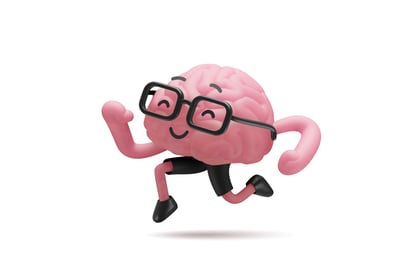 THE BRAIN: the most important organ in our body, is often the most forgotten when we think of training. Why does the brain always seem to slip through the cracks? We can’t stop talking about BMI, body fat percentage, heart rate reserve, and all these other buzz words in the fitness industry. Now you’re probably thinking “but isn’t exercise good for the brain?” and you’d be right but there is more to it than that. We aren’t specifically targeting our brain, we’re focused on our muscles, our heart and the brain is just getting a splash of the love it deserves. That’s something I’d like to change! And we can do that in the gym and at home.
THE BRAIN: the most important organ in our body, is often the most forgotten when we think of training. Why does the brain always seem to slip through the cracks? We can’t stop talking about BMI, body fat percentage, heart rate reserve, and all these other buzz words in the fitness industry. Now you’re probably thinking “but isn’t exercise good for the brain?” and you’d be right but there is more to it than that. We aren’t specifically targeting our brain, we’re focused on our muscles, our heart and the brain is just getting a splash of the love it deserves. That’s something I’d like to change! And we can do that in the gym and at home.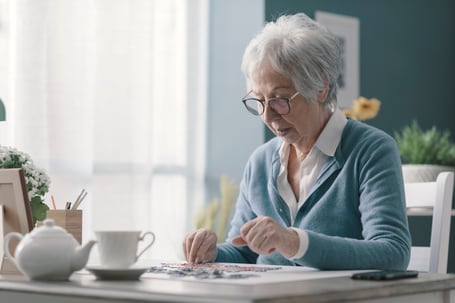 As we age there are many different changes that start to happen to our brain such as shrinkage, vasculature and cognition. With age, the brain shrinks and changes occur at all levels, from chemicals to morphology. Stroke, lesions, and dementia are all more common as people get older, as is memory impairment. Fortunately there are quite a few things we can do to help prevent or slow the process of some of those changes from happening. Regular exercise, a good diet, and low to moderate alcohol consumption, all of which minimize cardiovascular risk, appear to help the aging brain, as does increasing cognitive exertion in the form of schooling, games or meaningful activities. Physical and mental health may be the best defense against the effects of aging on the brain.
As we age there are many different changes that start to happen to our brain such as shrinkage, vasculature and cognition. With age, the brain shrinks and changes occur at all levels, from chemicals to morphology. Stroke, lesions, and dementia are all more common as people get older, as is memory impairment. Fortunately there are quite a few things we can do to help prevent or slow the process of some of those changes from happening. Regular exercise, a good diet, and low to moderate alcohol consumption, all of which minimize cardiovascular risk, appear to help the aging brain, as does increasing cognitive exertion in the form of schooling, games or meaningful activities. Physical and mental health may be the best defense against the effects of aging on the brain.
.jpg?width=378&name=Senior%20dancing%20GettyImages-504735537%20(1).jpg)

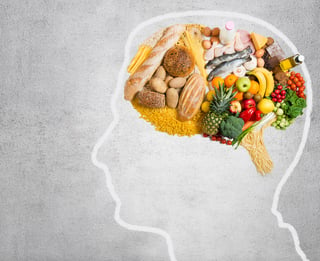 We already know that the foods you eat can affect your weight, heart, blood pressure, and certain cancers, but we also know that food and nutrition can affect your brain health. Whether it’s just improving your memory or helping to prevent Alzheimer’s disease, the foods you choose can help to make your
We already know that the foods you eat can affect your weight, heart, blood pressure, and certain cancers, but we also know that food and nutrition can affect your brain health. Whether it’s just improving your memory or helping to prevent Alzheimer’s disease, the foods you choose can help to make your 
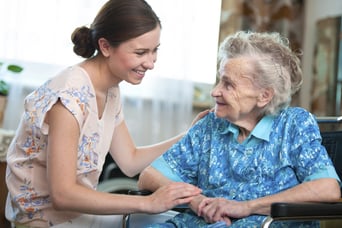 Taking Care of Someone with Cognitive Loss
Taking Care of Someone with Cognitive Loss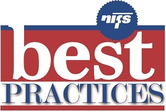
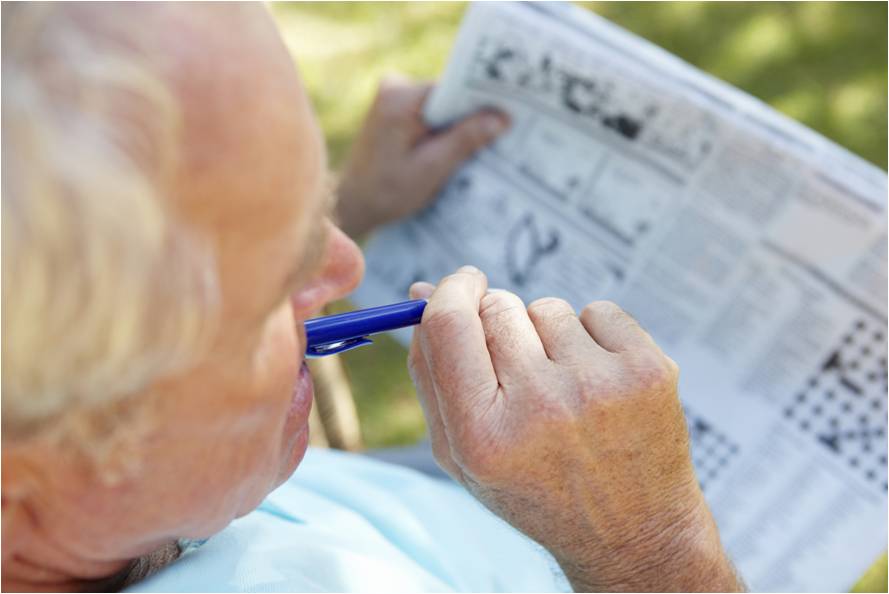 Most senior living communities have a variety of group fitness classes on their calendars focused on balance, muscular strength, flexibility, and cardiovascular health, and the clients we work with are no different. But we’ve landed on a program tied in with our group fitness classes for seniors that has become wildly popular with the residents. It turns out, it’s been a great way to draw more participants into the exercise program, too.
Most senior living communities have a variety of group fitness classes on their calendars focused on balance, muscular strength, flexibility, and cardiovascular health, and the clients we work with are no different. But we’ve landed on a program tied in with our group fitness classes for seniors that has become wildly popular with the residents. It turns out, it’s been a great way to draw more participants into the exercise program, too.
 Often when we think or talk about having good health, it consists of eating healthy foods and exercising. There are many areas of our lives that we could improve upon health wise—often it seems like there is so much to work on to keep track. However, one segment of health that seems to go by the way side is mental health. Just as muscles lose strength or cardiovascular fitness declines with age, your brain can lose agility and decline in the way that it functions. There is no one way to prevent degenerative diseases of the brain such as Alzheimer’s, but you can start today with the way you live your life to help make your brain healthier. Here are a few tips for great
Often when we think or talk about having good health, it consists of eating healthy foods and exercising. There are many areas of our lives that we could improve upon health wise—often it seems like there is so much to work on to keep track. However, one segment of health that seems to go by the way side is mental health. Just as muscles lose strength or cardiovascular fitness declines with age, your brain can lose agility and decline in the way that it functions. There is no one way to prevent degenerative diseases of the brain such as Alzheimer’s, but you can start today with the way you live your life to help make your brain healthier. Here are a few tips for great